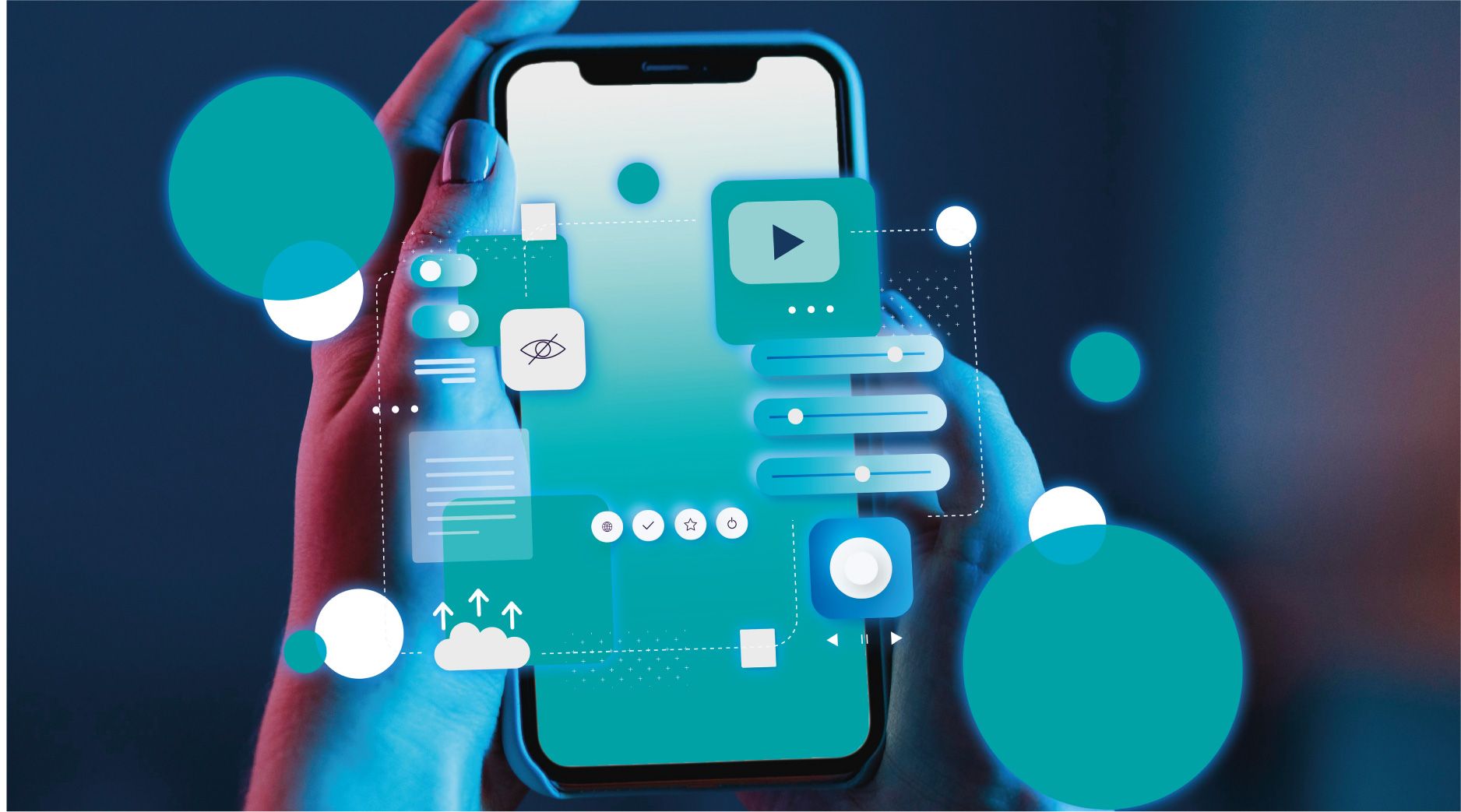The Future of Mobile Apps: How the Latest Technologies are Transforming the User Experience

The Future of Mobile Apps: How the Latest Technologies are Transforming the User Experience
Exploring the Latest Trends and Techniques in iOS, Android, Flutter, React Native & Hybrid App Development
Mobile software development is becoming increasingly important for businesses looking to stay competitive in today’s digital landscape. With the ever-increasing demand for mobile applications, companies are turning to outsourcing as a way to maximize their software development capabilities while reducing costs and risks. Nearshore software development outsourcing has emerged as an effective way to achieve these goals, while also taking advantage of the latest trends and best practices in mobile software development.
Nearshore outsourcing refers to the process of working with a third-party software development team located in a nearby country or region. This offers a range of benefits compared to traditional offshore outsourcing, including better collaboration, cultural alignment, and time zone proximity. When it comes to mobile software development, nearshore outsourcing can help companies leverage the latest trends and best practices in a cost-effective and efficient way.
Mobile software development is the process of creating software applications that run on mobile devices, such as smartphones or tablets. It involves designing, developing, testing, and deploying mobile applications for various operating systems such as iOS and Android. Mobile software development requires knowledge of programming languages, mobile app frameworks, user interface design, and mobile device capabilities.
There are several popular mobile development services that are widely used by developers and businesses. Here are some of the most popular ones:
- ● Android Studio: Android Studio is the official IDE for Android app development. It is developed by Google and offers a wide range of tools and features to help developers create high-quality Android apps.
- ● Xcode: Xcode is the official IDE for iOS app development. It is developed by Apple and provides a comprehensive set of tools and features to create iOS apps.
- ● React Native: React Native is a popular open-source framework for building mobile apps using JavaScript and React. It allows developers to create cross-platform apps that run on both iOS and Android devices.
- ● Flutter: Flutter is a mobile app SDK developed by Google that allows developers to build high-performance, high-fidelity, apps for both iOS and Android, from a single codebase.
- ● Ionic: Ionic is a popular open-source framework for building mobile apps using HTML, CSS, and JavaScript. It is based on AngularJS and allows developers to create cross-platform apps that run on both iOS and Android devices.
These are just a few of the many mobile development services available. The choice of platform or service will depend on the specific needs and requirements of the project.
Mobile App Development and User Experience
The latest technologies in mobile app development are transforming the user experience in several ways, making apps more intuitive, engaging, and responsive. Here are some of the ways in which the latest technologies are transforming the user experience:
- ● Artificial Intelligence & Machine Learning: AI and ML technologies are being used to personalize app experiences and make them more predictive. For example, chatbots and voice assistants can anticipate user needs and provide personalized recommendations based on user behavior.
- ● Augmented Reality and Virtual Reality: AR and VR technologies are being used to create immersive and interactive experiences that engage users on a deeper level. From virtual showrooms to augmented reality games, these technologies are transforming the way users interact with apps.
- ● Progressive Web Apps (PWA): PWAs offer a fast and seamless user experience, even in low network conditions. They can be accessed directly from the web browser, without requiring users to download an app from the app store.
- ● Cross-Platform Development: Cross-platform development technologies like Flutter and React Native allow developers to build apps that work seamlessly across multiple platforms, providing a consistent user experience across devices.
- ● User Interface Design: With new technologies like SwiftUI and Jetpack Compose, developers can create visually stunning and responsive user interfaces that offer a more engaging and immersive user experience.
Common pain points in mobile software development
The latest technologies in mobile app development are transforming the user experience in several ways but it can be a complex and challenging process, and there are several common pain points that developers often encounter:
- ● Compatibility Issues: Mobile devices come in a variety of sizes, platforms, and operating systems. This makes it challenging to ensure compatibility across all devices and platforms, and developers must test and optimize their applications for each platform and device.
- ● Security Concerns: Mobile devices are particularly vulnerable to security breaches, and developers must take extra precautions to ensure the security of their applications. This includes using encryption, implementing secure coding practices, and regularly updating software.
- ● User Interface Design: Creating a user-friendly and visually appealing interface is a critical aspect of mobile software development. Developers must ensure that their applications are easy to use and navigate, while also providing users with the functionality they need.
- ● Performance Optimization: Mobile applications must be optimized for performance to ensure that they load quickly and operate smoothly. This can be a challenging process, as mobile devices have limited processing power and memory.
- ● App Store Approval: Getting an application approved for distribution in the app store can be a complex and time-consuming process. Developers must adhere to strict guidelines and standards, and any issues can result in delays or rejection.
- ● Testing and Quality Assurance: Comprehensive testing and quality assurance are essential for ensuring the functionality and usability of mobile applications. This can be a time-consuming process, and developers must balance the need for thorough testing with the need to meet project deadlines.
- ● Integration with Backend Systems: Many mobile applications require integration with backend systems, such as databases, APIs, or third-party services. This can be a complex and challenging process, requiring specialized expertise and careful planning.
Mobile app development can be a complex process, and there are several common pain points that developers often encounter. However, by taking a proactive approach, developers can avoid many of these issues. Here are some tips to help you avoid the most common pain points in mobile app development:
- ● Plan Ahead: Before you begin development, make sure you have a clear understanding of your app’s purpose, features, and target audience. This will help you avoid scope creep and keep the project on track.
- ● Test, Test, Test: Testing is crucial in mobile app development. Make sure you test your app on multiple devices and in different network conditions to identify and address any bugs or issues.
- ● Collaborate Effectively: Effective collaboration between designers, developers, and project managers is key to avoiding pain points in mobile app development. Make sure everyone is on the same page and communicating effectively throughout the development process.
- ● Prioritize Security: Security is essential in mobile app development, and should be a top priority throughout the development process. Make sure you implement proper security protocols and regularly update your app to address any security vulnerabilities.
- ● Stay Up-to-Date: Mobile app development is a fast-paced industry, and new technologies and trends are emerging all the time. Make sure you stay up-to-date with the latest developments to ensure your app stays relevant and competitive.
By following these tips, developers can avoid many of the most common pain points in mobile app development, resulting in a smoother development process and a higher-quality end product.
Latest Technologies in Mobile App Development
Mobile app development is a constantly evolving field, with new technologies and approaches emerging all the time. Let’s take a look at some of the latest technologies being used in mobile app development, including iOS, Android, Flutter, React Native, and Hybrid.
iOS
Apple’s iOS platform is constantly evolving, with new versions of the operating system being released regularly. iOS app developers are using Swift, the programming language developed by Apple, to build native apps. SwiftUI is another technology used in iOS development, which simplifies the UI development process by allowing developers to build UIs declaratively. In addition, Apple’s ARKit and Core ML frameworks are being used to develop augmented reality and machine learning applications.
Android
Java and Kotlin are the primary programming languages used in Android app development. Kotlin, a modern programming language for Android development, has been gaining popularity in recent years. The Android platform provides access to a wide range of APIs and libraries, including Google’s Material Design components, which make it easy to create beautiful and responsive user interfaces. Android developers are also using technologies like Jetpack Compose and Android Architecture Components to simplify and accelerate the development process.
Hybrid
Hybrid app development involves using web technologies like HTML, CSS, and JavaScript to build applications that can run on both iOS and Android platforms. Hybrid app development frameworks like:
Flutter
Flutter is an open-source UI toolkit developed by Google that allows developers to build high-performance, natively compiled applications for mobile, web, and desktop from a single codebase. Flutter uses Dart as its programming language, which offers features like hot reload and just-in-time compilation for faster development cycles. Flutter also provides a powerful animation framework and a wide range of widgets that can be used to create beautiful and responsive user interfaces.
React Native
React Native is a popular open-source mobile development framework developed by Facebook. It allows developers to build high-performance, natively compiled applications for iOS and Android using the same codebase. React Native uses JavaScript as its programming language, making it easy for web developers to transition to mobile development. React Native also provides a large number of third-party libraries and components, making it easy to build complex applications.
The technologies discussed above are just a few examples of the latest trends in mobile app development. In addition to these trends, there are also several best practices that companies should follow when working with a nearshore outsourcing team for mobile software development. These include defining clear project requirements and goals, establishing open communication channels and regular updates, selecting an experienced and reliable outsourcing partner (hint: Golabs), fostering a collaborative and transparent working relationship, and following industry standards and regulations.
The Golabs Nearshore Model
Nearshore software development outsourcing offers an excellent opportunity for companies to maximize their mobile software development capabilities while minimizing costs and risks. Maximizing mobile software development with nearshore software development outsourcing can be achieved by following these latest trends, best practices, and benefits.
The Golabs Nearshore Model offers a flexible and cost-effective option that can help your business achieve its goals at a lower cost whilst keeping quality standards high.
When it comes to Mobile Development outsourcing, some benefits of using the Golabs Nearshore Model services include:
- ● Cost-effective: Nearshoring services in Latin America for US or Canadian companies can be more cost-effective than outsourcing to more distant countries. This is because the labor costs and overheads are lower, making it possible to get high-quality mobile development services at a lower cost.
- ● English proficiency: All our engineers have a B2+ english proficiency level, helping to ensure that the outsourced team members understand the client’s requirements and are better able to deliver a high-quality product.
- ● Time-zone compatibility: With our nearshore services, the time zone difference between us is minimal. We operate in CST, making the mobile team available during the company’s working hours, which is often crucial for efficient collaboration and problem-solving.
- ● Proximity: Golabs is strategically located in Costa Rica, making it easier to communicate and collaborate with us. This can help to reduce communication barriers, cultural differences, and time zone differences, which can all impact the efficiency of the project.
- ● Cultural affinity: Costa Rica is a beautiful democratic and touristic country where many North American friends come to visit and retire as well. They are also amongst our most important commercial partners.
- ● Availability of talent: At Golabs we have a vast experience in talent acquisition, management and a large pool of skilled and experienced mobile development engineers. This can help to ensure that you have access to the right talent for the specific project requirements, without having to invest in recruitment and training.
By leveraging the latest trends and best practices, companies work with nearshore outsourcing teams to develop high-quality mobile applications that meet their business needs and deliver value to their customers. With one of the most skilled and highly educated populations in all of Latin America and a history and interest in technology, Costa Rica has an ideal Time Zone and is a natural nearshore choice for U.S. and Canadian companies with software development needs.
From identifying a client’s challenges to implementing custom-tailored smart technology solutions the Golabs Nearshore Model’s journey is a simple four step process:
1. Discovery: Organization & Challenge Analysis
2. Goal-Oriented Map Planning
3. Personalized Development Solution
4. Process Implementation and Monitoring
Because of our English proficiency (B2+ level across the board), close proximity, cultural affinity, and availability of talent, we can help reduce communication barriers, increase collaboration, and deliver top-quality software solutions. Golabs is the nearshore software solutions partner that will help you build and manage the best engineering team to create top tech products and enable your next business breakthroughs.


